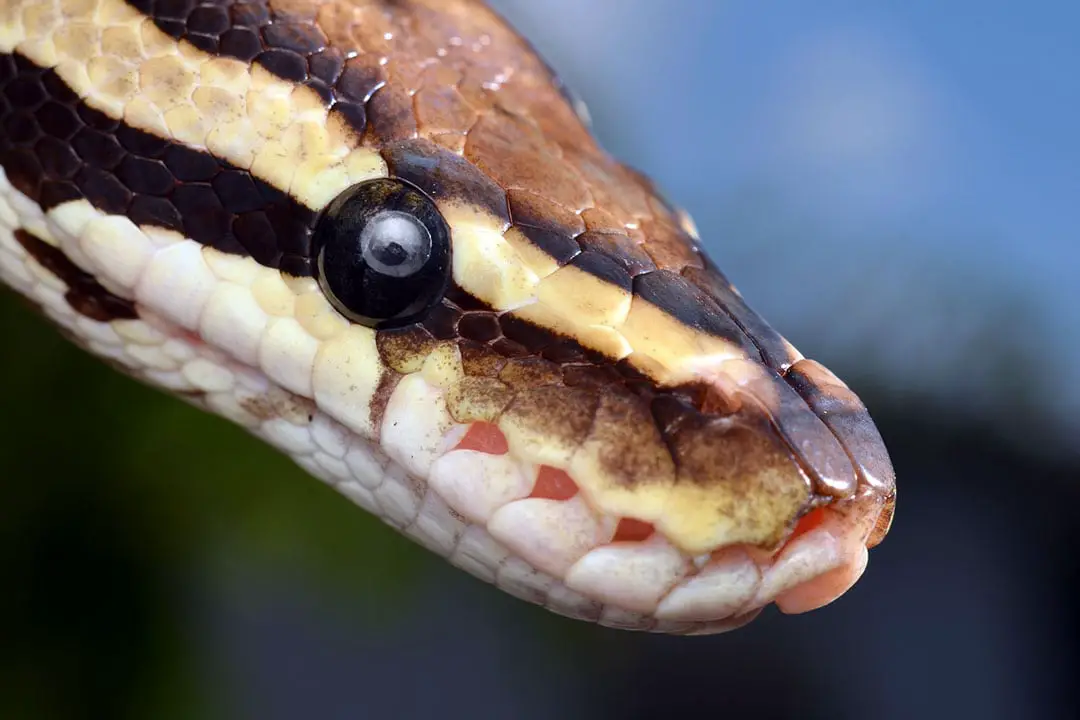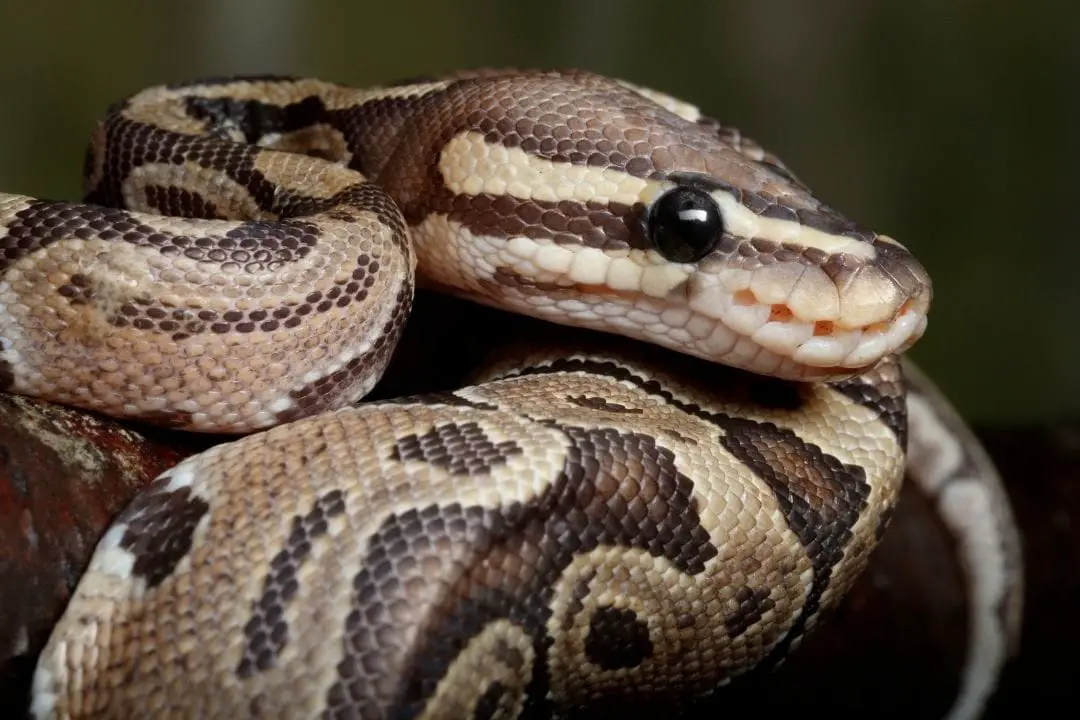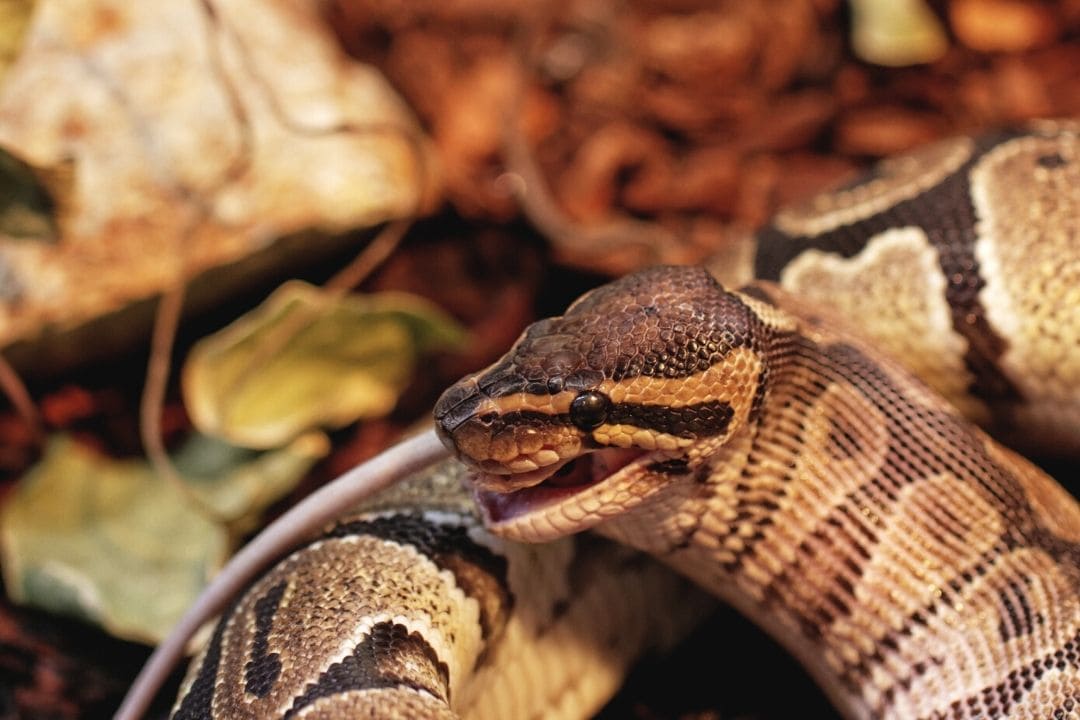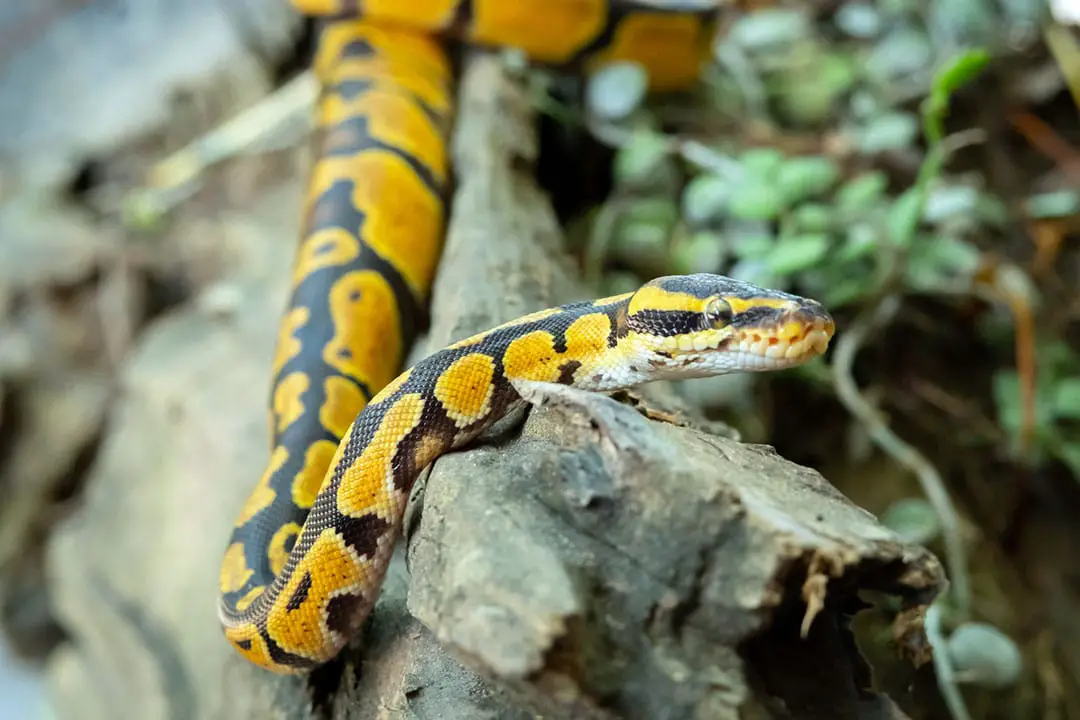Ball pythons or royal pythons (Python regius) are wonderful constricting snakes native to Central and Western Africa. These snakes are widespread in their native habitat and are one of the least threatened by human activity.
They are typically considered terrestrial and regularly live in burrows, but males and juveniles are regularly found in trees. Females are also occasionally seen in the trees.
If you want to keep one of these snakes, this care sheet will teach you everything you need to know. Ball pythons are a very popular pet snake.
A lot of bad information is still circulating on how to care for them, so be sure to keep an eye on the latest research to keep your snake happy and healthy for the 20-30 years they will live.
Housing
Ball pythons are not particularly long snakes, but they do need adequate space. Adult males are generally under 4 feet, while females will be around 5 feet. Some will be much larger.
You may read that they will be happy in a small sweater box. This is not true. Animals kept in those conditions are frequently obese with poor muscle tone since they barely move.
These snakes are curious and love to explore. The more room you can offer, the better. They are stressed by being in the open, but this can be fixed by filling the enclosure with decorations and hides.
Enclosure
Ball pythons need plenty of space to move. They need exercise to stay healthy and the ability to explore to get mental stimulation. When you select an enclosure, look for something that opens from the front.
You also need to make sure it is secure since ball pythons are escape artists. Never use tape to secure a lid on an enclosure. Tape can cause injuries if the snake rubs on it.
Enclosure for Juvenile Ball Pythons
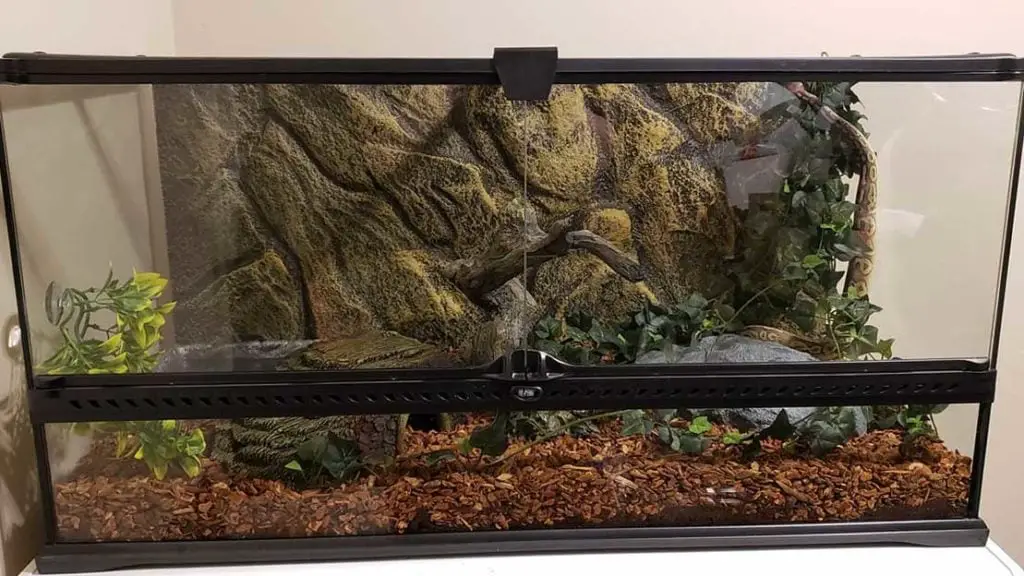
Hatchling and juvenile ball pythons are typically shy snakes. As they age, they will become more curious and active. Generally, you want enough room for the snake to stretch out fully. You also want plenty of decorations and branches for your snake to climb.
This helps satisfy their natural desire to climb and gives them exercise. You should make sure to upgrade an enclosure once your snake can no longer stretch out fully. Since these snakes are nervous, you really need a front-opening enclosure for them.
A 36x18x18″ is a good size for a juvenile ball python. It should be secure, open from the front, and the glass will help make it easy to create a temperature gradient.
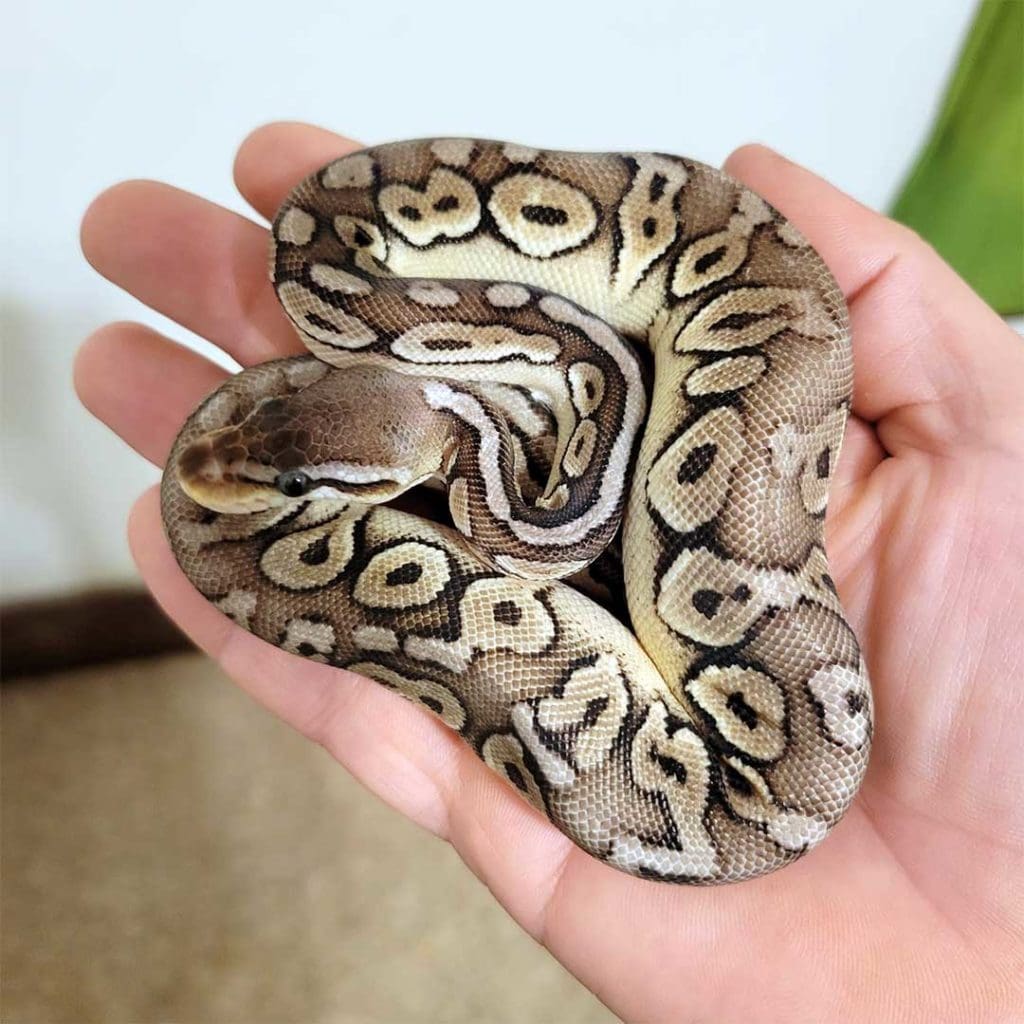
This is a great choice for snakes under 3 feet long. You will likely need to block part of the screen to help raise humidity.
A juvenile or baby ball python will need a lot of hiding places and fake plants to feel safe, they won’t like a big enclosure with nowhere to hide in it. Keep the enclosure a bit busy with branches and decoration elements.
Enclosure for Adult Ball Pythons
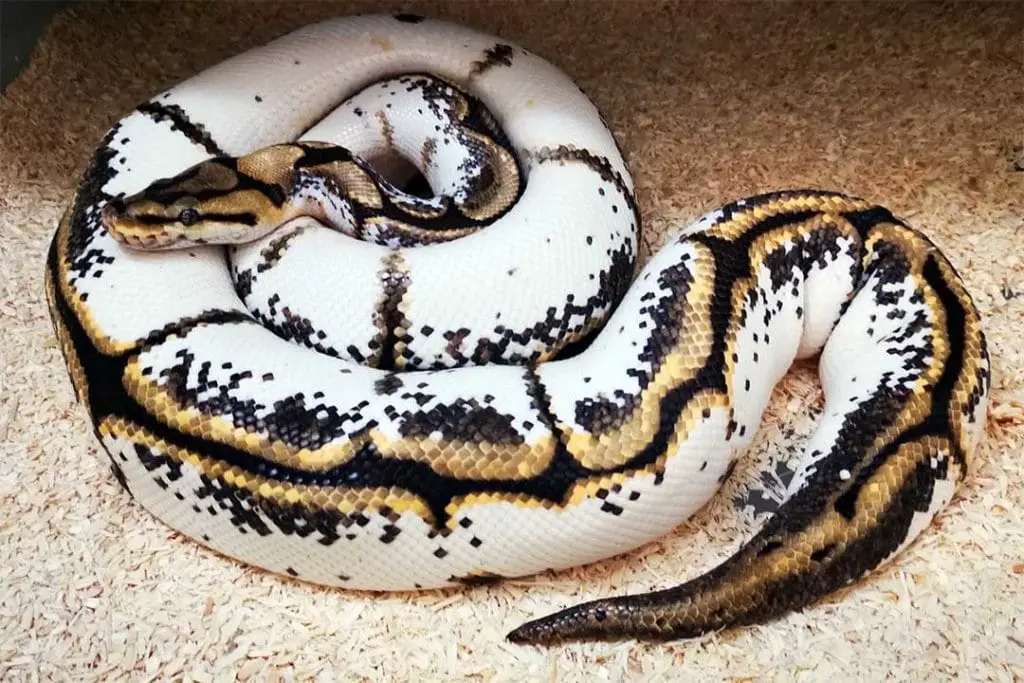
Adult ball pythons need to stretch out fully. They also need plenty of room to explore. These snakes are crepuscular, meaning they will be most active at dawn and dusk.
You may not see it, but these curious animals will use every inch of their enclosure. Your snake should have enough room to fully stretch out and at least 2 feet in height since they climb.
Make sure you have sturdy decorations since these snakes are pretty heavy. Adults are typically calmer than juveniles, but front-opening enclosures are still easier to use for snakes.
Never go smaller than 48″ by 24″ by 24″ for an adult. If your snake is longer than 4 feet, you should get something longer, but remember that it should still be 2 feet high to fit enough decorations and 2 feet wide minimum.
These are bulky snakes and they typically need more space. Once again, you may need to block the screen a bit and mist often to keep the humidity up.
Substrate
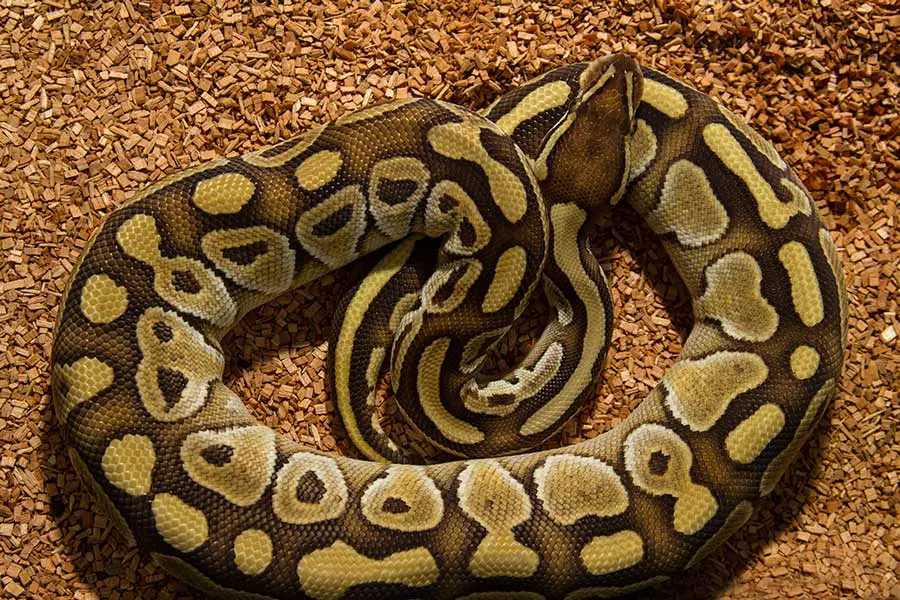
Ball pythons require a substrate that will hold moisture well and not risk molding or rotting in the humidity. Reptichip is made of eco-friendly coconut chips.
It holds humidity well and provides a natural habitat that won’t harm your snake. Make sure you use around 4 inches of the substrate since this will help retain humidity.
Other options include a custom mix, soil meant for reptiles, cypress mulch, soil for bioactive setups, and even a paper towel. Each of these holds moisture well or at least doesn’t hurt it and will not mold.
Paper towels are the best option if you have a new snake or you suspect illness. This lets you monitor urates and feces easily.
Although it is a good substrate for other species, I wouldn’t recommend using aspen for ball pythons since it can mold in the humidity and can make your snake ill.
Never use cedar or pine for reptiles since the aromatic oils in these woods can harm reptiles.
Bioactive terrariums will include leaf litter, soil and other materials. Bioactive substrates are designed to support natural cleaning microfauna (springtails and isopods).
They do look very good in a well lit enclosure, however the risk of harmful bacterias and bugs increases and I would not recommend it for most people.
Heating
Ball pythons rely on the ambient temperature to regulate their internal temperatures, getting heating right is critical for proper ball python care.
If your snake doesn’t have the right temperatures, it can get sick. Too cold and your snake can’t digest. Too hot and it risk heat-related illnesses.
You will need to have a temperature gradient to let your snake move around to thermoregulate. Glass enclosures are really good at losing heat, so this can help.
You can use hot rocks, ceramic heat emitters and other solutions, but the easiest way to offer heat to a ball python is to position a heat mat under a third to half of the enclosure:
This heating mat should be plugged into a thermostat to keep it from burning your snake by getting too hot, the thermostat will regulate the temperature at all times by turning the heat on and off.
Make sure to position this outside the enclosure.
If your snake touches the heat pad or any lighting directly, it can be burned. Snakes seek out warmth and they can easily overheat by sitting directly on a light or heating unit.
Ceramic heaters are also popular for pythons, but these can dry out an enclosure.
Keep up on misting. You should only use one if you are having trouble keeping the temperature up. Make sure you have a thermometer that can check each side of the enclosure and get a temperature gun to do spot checks occasionally.
So what is the right temperature in a ball python’s terrarium?
The right temperature for a ball python’s enclosure is 86 to 90 degrees Fahrenheit on the warm side, and 72 to 80 degrees Fahrenheit on the cool side.
You can offer a basking spot that is up 104 degrees measured at the surface. Never use a heat rock for this. They can heat up too much.
You can let the temperature get into the low 70s at night without a problem.
Lighting
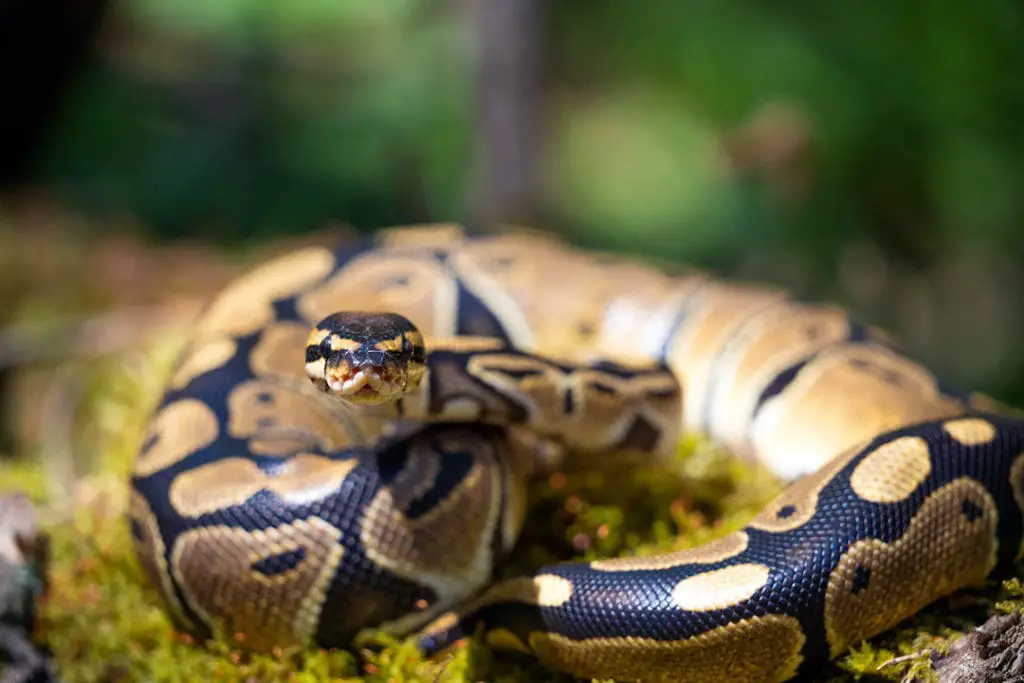
Snakes do not need special lighting to stay healthy. If you start lighting ball pythons, you can keep it on for 12 hours a day. Make sure you pick something that won’t raise the temperatures inside the enclosure.
Shelter
Ball pythons need plenty of hides to feel secure.
Hide boxes need to be just large enough to hold the snake without having too much spare space. You can use something as simple as a solid plastic tub that isn’t clear,diy hide boxes, or go for something that looks nicer.
Make sure it is easy to sanitize. You will need at least 2, positioned on the warm and cool sides of the enclosure. More hiding spaces and cover is always better. You can use artificial greenery or even real plants to offer cover.
This is a good option for a hide for a ball python. You might need something larger for an adult female, so keep an eye on your snake as it grows and size up your hides.
Water
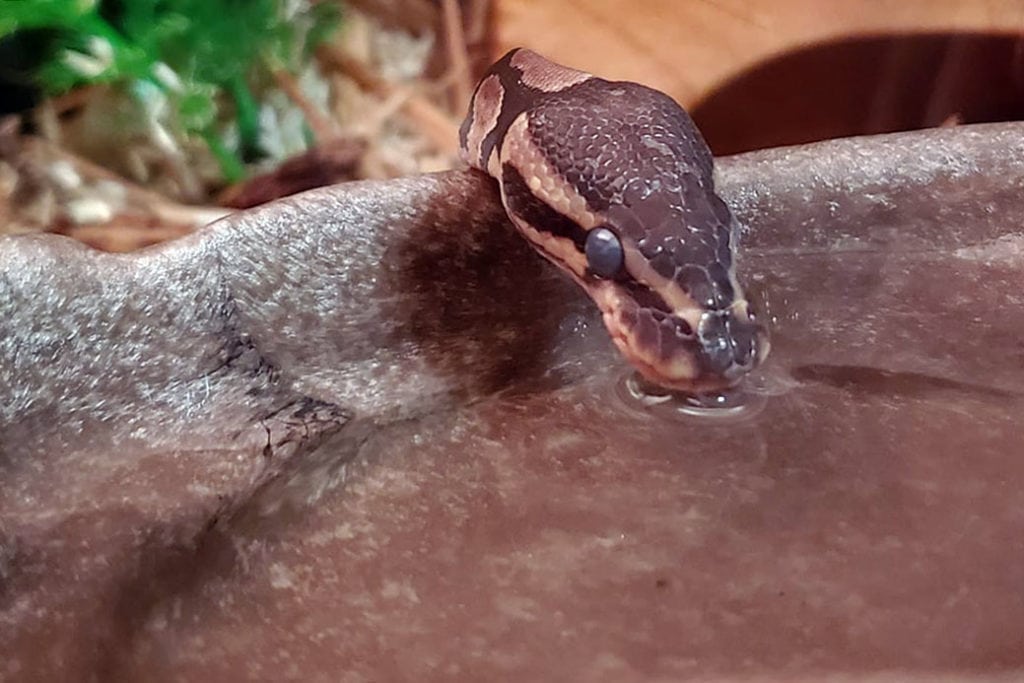
All snakes need constant access to fresh water. Your snake will drink it and may soak in it if the humidity is a bit too low. The water dish will also help raise the humidity. Since some snakes like to defecate in their water, you also want a dish that is easy to clean. Look for a dish that is shallow and large enough to fit your whole snake.
This is a great option for a young ball python. You can size it up if you notice that it is a bit too small for your snake. Just make sure your snake doesn’t flood the enclosure by tipping all the water out.
Humidity
Humidity is essential for keeping your ball python healthy. Your snake can end up dehydrated if the humidity is too low.
So what is the right humidity level for a ball python?
A Ball python needs 60% humidity in its terrarium. You should raise this a bit during shedding.
If the ball python’s enclosure is too dry, your snake may have trouble shedding. A stuck shed can cause infections, so keep that humidity up with regular misting.
You can place use a spray bottle to mist the enclosure from time to time, and damp sphagnum moss in a hide on the warm side to help raise humidity. This is a great thing to offer during shedding.
If you are unable to maintain enough humidity, reduce the ventilation a bit by covering a part of your terrariums vents. (do not block these completely as they need circulating air.
Maintenance
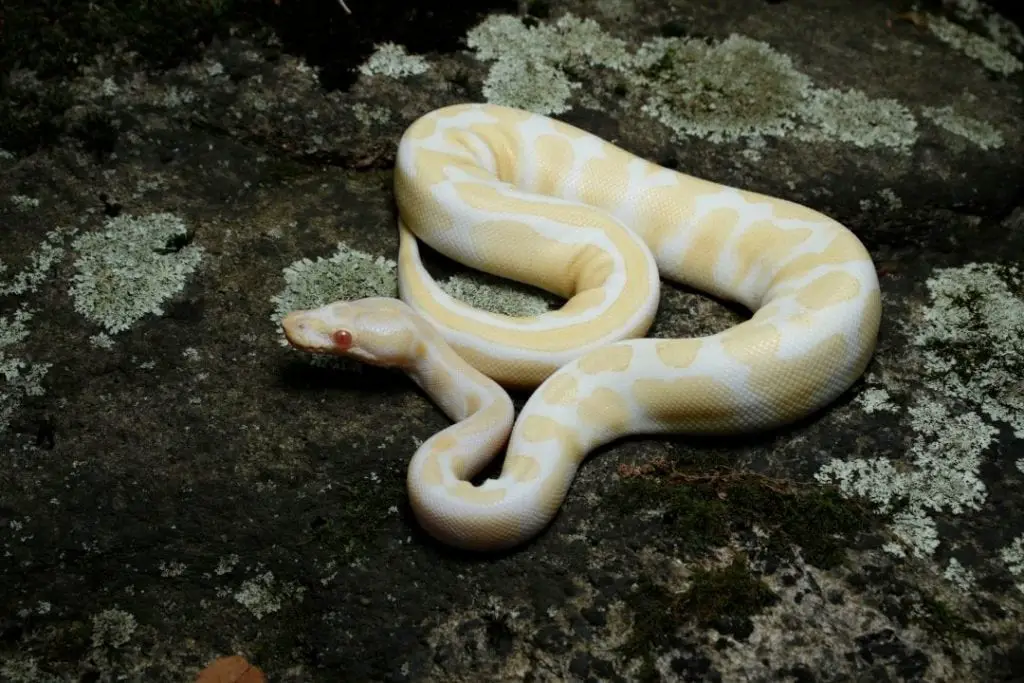
Keeping a clean enclosure is essential for your snake’s health. You should be spot cleaning any urates or feces daily and replacing the dirty substrate.
You should also offer fresh water daily. You will need to clean and sanitize the water dish at least once a week. Every month, you need to do a deep clean.
Make sure you have a temporary enclosure for your snake. You can use a basic plastic tote so long as the lid is secure and you add holes for ventilation.
Once your snake is safely put away, turn off all the heating and lighting. Take out all the decorations and its hide box and set it aside to clean.
You will need to empty out the substrate and clean the enclosure. Soap and water are good for a start, but be sure you do not spray cold liquid on hot glass since it may break.
Once you have it scrubbed, use a reptile-safe sanitizer to sanitize the whole enclosure. Clean up any liquid and leave the enclosure open to dry.
Next, scrub down all the hides and any decoration. Make sure you get the water dish as well and rinse it thoroughly. If it is dishwasher safe, this can be a great way to clean up quickly.
Once everything is clean and dry, turn on the heating and add the substrate to a depth of 4 inches. Replace all the decorations and add fresh water to the dish.
Once this is done, you can return your snake. Make sure you secure all the locks so your snake can’t escape. It may be very eager to explore and see what you changed.
Adult snakes are curious and will test every inch of the enclosure, so they will find if you left a latch unlocked.
Feeding
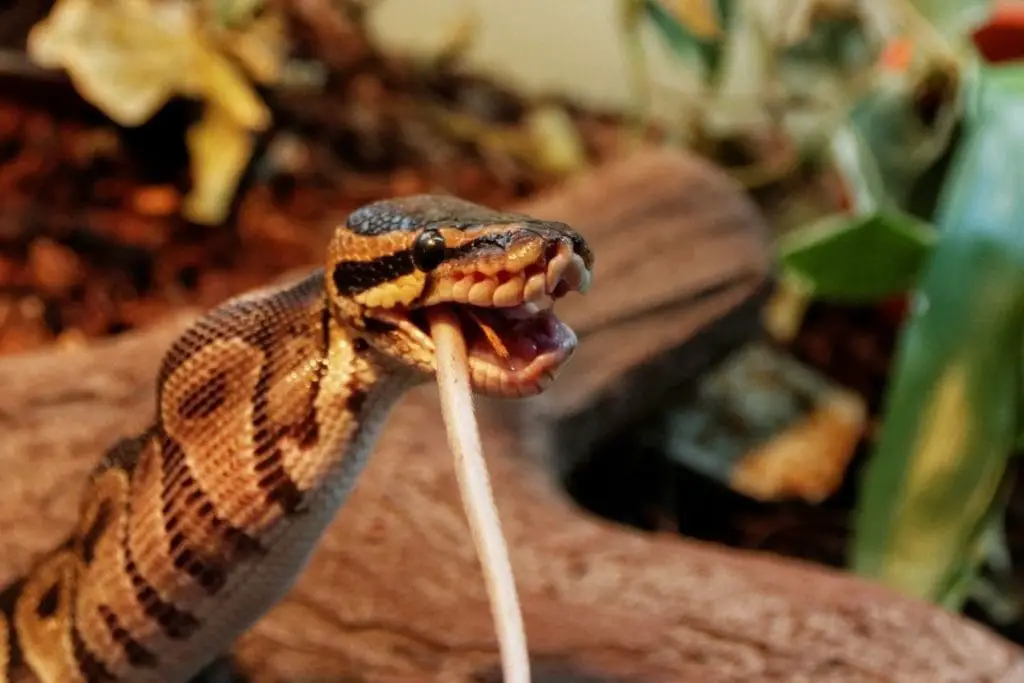
All animals need to be fed. Like other reptile species, a ball python’s diet is varied in the wild, where they are ambush predators. They will pick a spot and wait for a rodent to come by.
The constricting snake will then strike and either eat the prey alive or constrict it. Constriction will kill prey in seconds since it cuts off blood to the brain.
These snakes rarely eat anything other than rodents in their native range and are important for controlling rodent populations.
Type of Prey and Size
As a general rule, ball pythons should be eating prey that weighs about 10-15% of its body weight. This means that a 200 gram snake will eat prey that is around 20-25 grams in weight.
Most prey items are listed with average weight, so you can easily size prey to your snake. In captivity, you will be feeding mice or rats most often.
Some snakes prefer African soft-furred rats, which can be found frozen from some outlets. Your snake may also appreciate the occasional bird such as a chick or quail.
Not all ball pythons like having the prey switched up, so keep an eye on your snake. Some snakes will also accept Reptilinks, which are basically sausages made from whole prey.
These are a great option if someone squeamish needs to feed your snake. Just note that some are stubborn, so be sure to test if they will accept it easily before you rely on these as a food source.
Here is a list of what your ball python will eat depending on its size. Remember to select based on the weight!
- Hatchling’s first 5 meals: Pinkie rat or hopper mouse
- Under 200 grams baby ball python: Rat fuzzy or small mouse
- 200-350 grams: Rat pup or adult mouse
- 350-500 grams: Weaned rat or jumbo mouse
- 500-1500 grams: Small rat or 2-3 adult mice
- Over 1500 grams: Medium rat, 2 small rats, or 4-5 adult mice
Frozen vs Live

The frozen or live food debate rages on in the snake-keeping community. Some ball pythons are picky and will only accept live food.
However, live food can fight back and injure or even kill a python regius (royal python scientific name). Since captive ball pythons eat larger mice or even adult rats, this is a huge risk.
Frozen prey removes this danger, but some snakes will not tolerate pre-killed food. You should not ever stun live prey, since it can wake up and immediately fight back.
Never leave live prey unattended with a snake. If your snake will only take live food, never leave it for more than 30 minutes and stay until the prey is killed.
Live pros:
- Feeding live prey allows natural hunting behaviors
- Some snakes will only eat live prey
Live cons:
- May fight back and hurt your snake
- Can have parasites
- Need to house the mouse until meal time
- Harder to find and more expensive
Frozen pros:
- Frozen rodents are easy to stock up
- Can’t hurt your snake
- Can buy online
- More affordable
Frozen cons:
- Some snakes won’t take it
- Have to store dead animals and handle them
- Slightly less nutrition
As for sourcing prey, live rodents cannot be shipped through the mail. You need to buy rodents from pet stores, a local feeder breeder or a pet store.
Animal expos may have them as well. Check your local Facebook or Craigslist to find local breeders who may have spare feeder animals.
For Frozen mice can be sourced from the same places you can find live prey, I also recommend Micedirect:
Frequency

Ball pythons are prone to obesity. These are generally fine as far as frequency, but be sure to check your snake to make sure it is growing well.
In the wild, these snakes go for long periods without eating. Use the weight to make sure your snake is gaining weight properly when young or maintaining it as an adult.
The spine of the snake should be slightly visible, but not too prominent. If you can’t make out the spine, your snake is likely obese.
Here is how often you should feed a ball python based on age. This is a guideline. As a ball python grows it may need to eat more or less often.
- Hatchling’s first 5 meals: Every five days
- Baby ball pythons under 200 grams: Every 7 days
- 200-350 grams: Every 7-10 days
- 350-500 grams: Every 10-14 days
- 500-1500 grams: Every 14-21 days
- Over 1500 grams: Every 28-56 days
Shedding
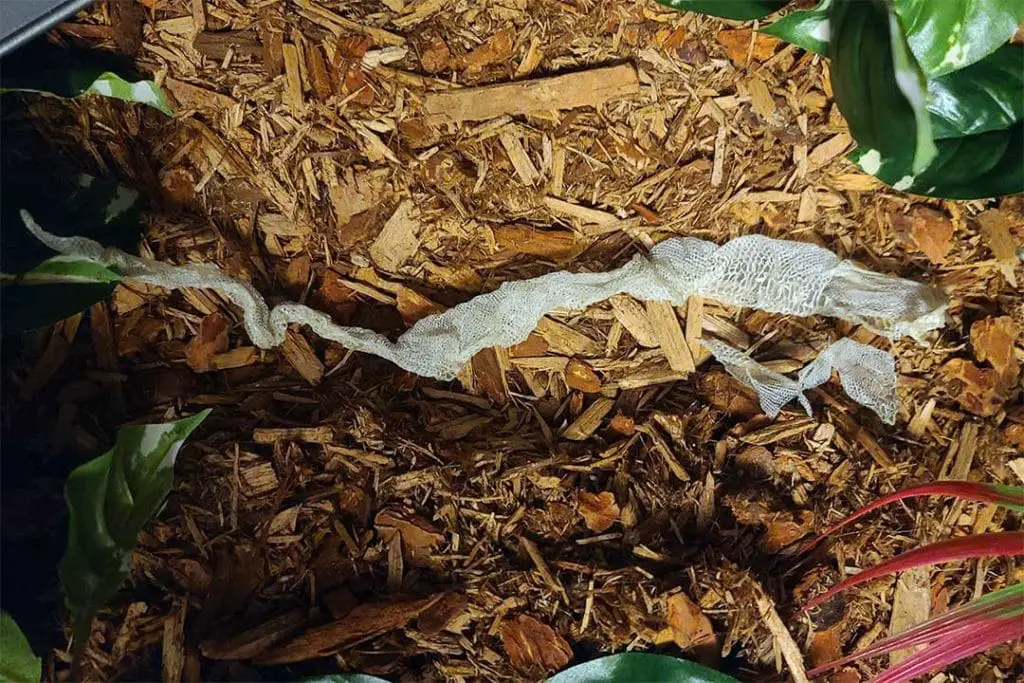
Unlike humans, a snake’s skin will not grow with it. Your snake will need to shed to grow larger. You will see your snake get cloudy eyes and dull colors before a shed.
Make sure you mist more often and keep a damp hide available. Once your snake sheds, check that the shed came off in one piece. If some is stuck, put your snake in a container with a warm, damp paper towel for about half an hour.
Then try to gently remove the stuck shed. If it does not come off easily, repeat the treatment. If it is really stubborn, head to a reptile vet. Stuck shed can cause injuries or infection if left alone.
Hibernation
In Western Africa, Ball pythons are a terrestrial species that do not experience hibernation or brumation. They may refuse to eat during winter, but this is normal.
Some breeders will lower temperatures during winter to help increase the number of eggs their snakes lay, but you do not have to.
Handling
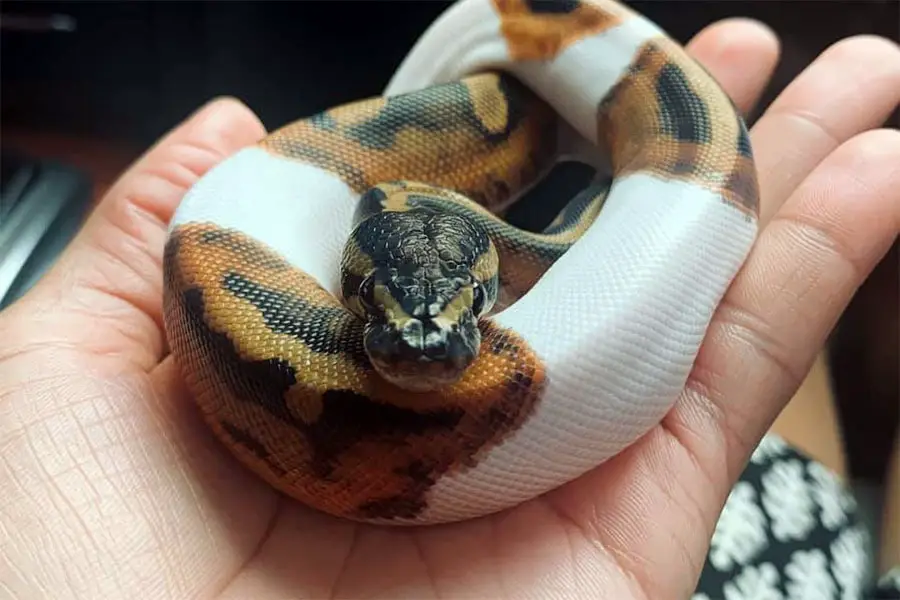
Handling your snake will make it less stressed around you and give it a chance to exercise. Never handle a snake within 2 days of a meal since they may regurgitate their food.
You also don’t want to handle your snake when it is in shed. Wait until a new snake is eating regularly before attempting to handle it.
Male ball pythons are not more tame than females, contrary to popular belief in the pet trade.
Start by washing your hands and using hand sanitizer to make sure you don’t smell like food. Next, gently tap your snake with a paper towel tube or a snake hook so it knows it is handling time. Ball pythons are smart enough to learn this signal.
Once your snake is showing slow, calm tongue flicks you can pick it up.
Lift the snake after approaching from the side with one hand supporting the head and the other on the mid-body. Hold your snake loosely and let it explore.
If your snake balls up or bites, return it to the enclosure. Remember not to pull away from a bite since this can break the teeth.
Handle your snake 1 or 2 times a week and it should become and stay tame for life. Younger snakes can be more defensive, so be patient.
Common Issues
This is a quick FAQ you can check for important question on python regius care.
My Ball Python Isn’t Moving/ Isn’t Active
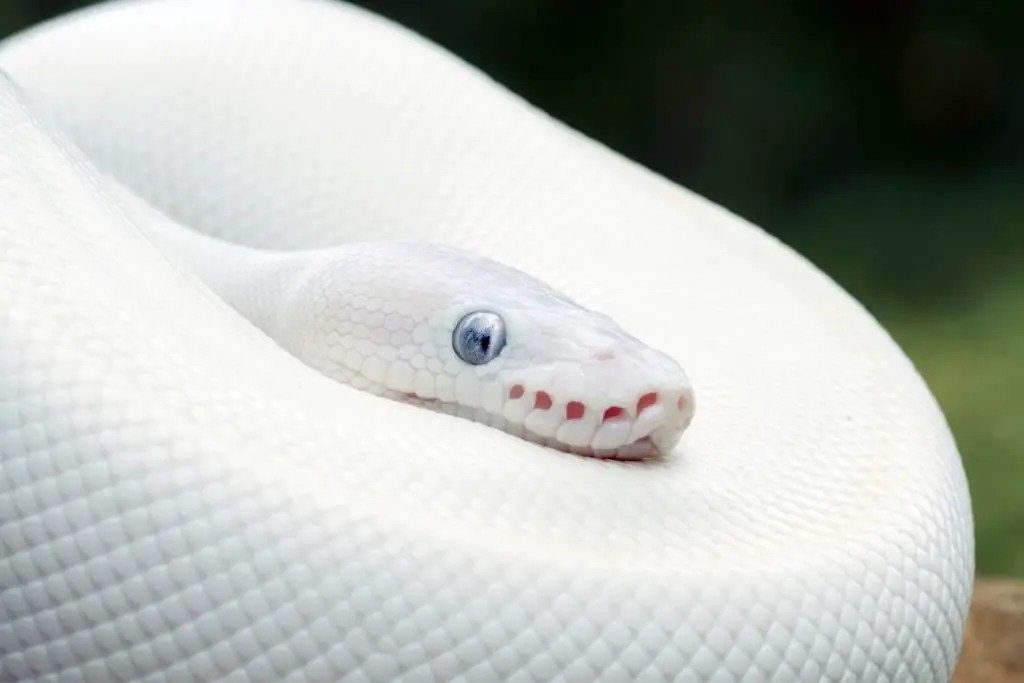
If your temperatures and humidity are right, then shedding and a recent meal are the most common causes of lethargy. Keep an eye on your snake to see if it is about to shed if it hasn’t eaten in the past few days.
If you notice additional signs that something may be wrong like excessive mucus or mouth rot, take your snake to the vet.
Ball Python Not Eating
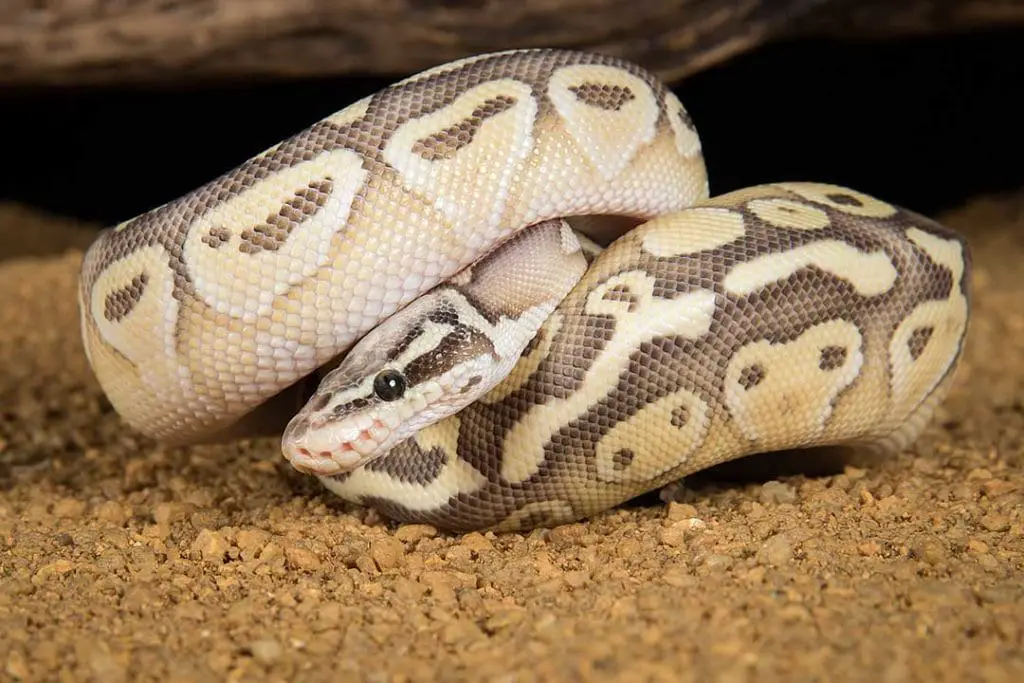
Ball pythons can go long periods of time without eating in the wild. An adult snake may only eat 10 times a year. Many ball python also refuse to feed during the winter.
Young females frequently stop feeding for a period, and males may not feed during the breeding season.
Keep an eye on your snake’s weight. If it loses more than 10% of its healthy body weight, it is time to head to the vet. Otherwise, let your snake signal when it is hungry again.
Burrowing
Some ball pythons will burrow, but not all. If your snake has never burrowed before, your snake may be stressed or ill. Check your temperature and humidity and make sure your hides are large enough to fit the whole snake.
Trying to Escape
Your snake may just be exploring. Ball pythons are curious and like poking around their enclosures. Hungry snakes may try to escape to find food.
Try offering a meal.
If your conditions are off, the snake may try to escape for somewhere better. A clean tank in the right temperature range is an attractive place to stay. You can also swap up decorations to give your snake something new to explore.
My Ball Python is Hissing at Me
If your snake is hissing at you, it feels you are a threat.
This is common in new or younger ball pythons. If your snake is suddenly hissing at you when it didn’t used to do so, it may be ill.
A sick snake will be defensive. If it is about to shed, it may also be more defensive. Mothers guarding a clutch of eggs may also hiss at you if you approach the eggs.
Sources
- Dropping the Ball? The Welfare of Ball Pythons Traded in the EU and North America
- Animal-appropriate housing of ball pythons (Python regius) — Behavior-based evaluation of two types of housing systems
- Animal Diversity – Python Regius
- The effects of UV light on calcium metabolism in ball pythons (Python regius)
- The first genetic assessment of wild and farmed ball pythons (Reptilia, Serpentes, Pythonidae) in southern Togo
Conclusion
This ball python care guide is wrapping up; I hope that you now know how to keep a ball python healthy and happy.
If you have any questions or comments, please leave it down below!
